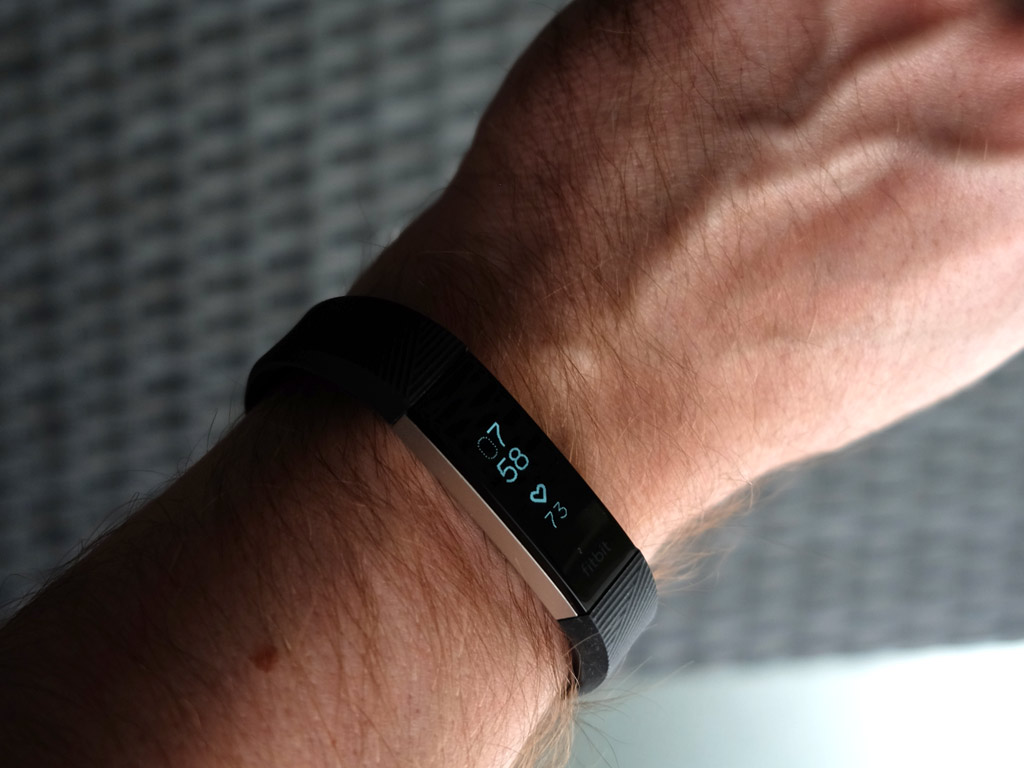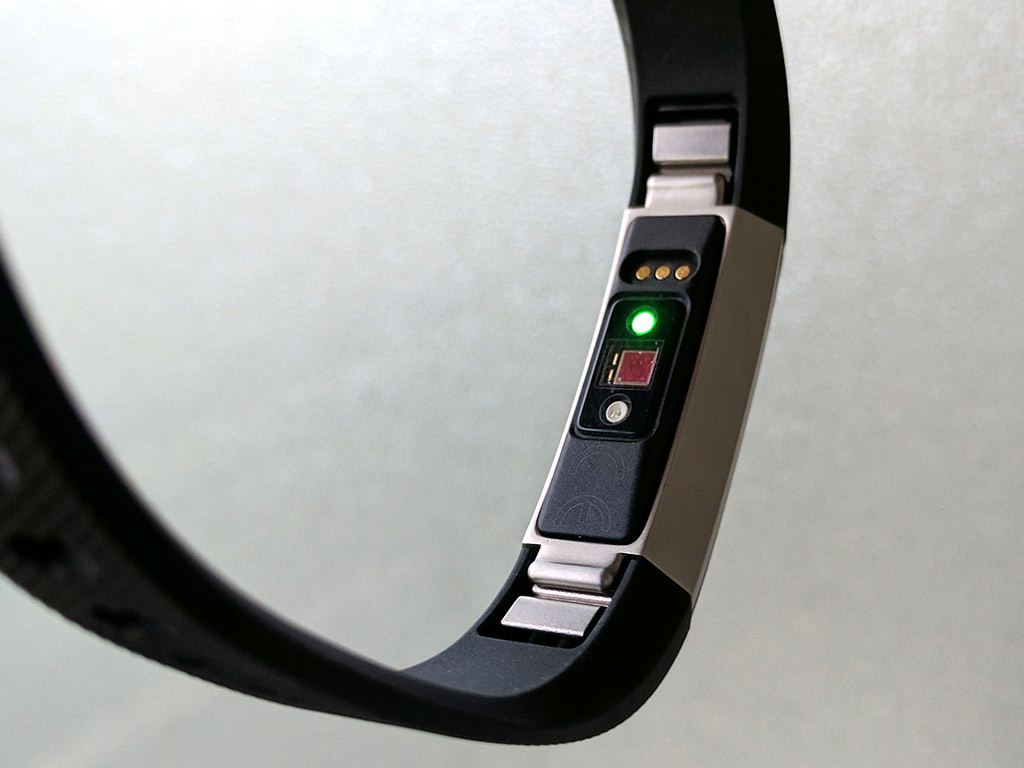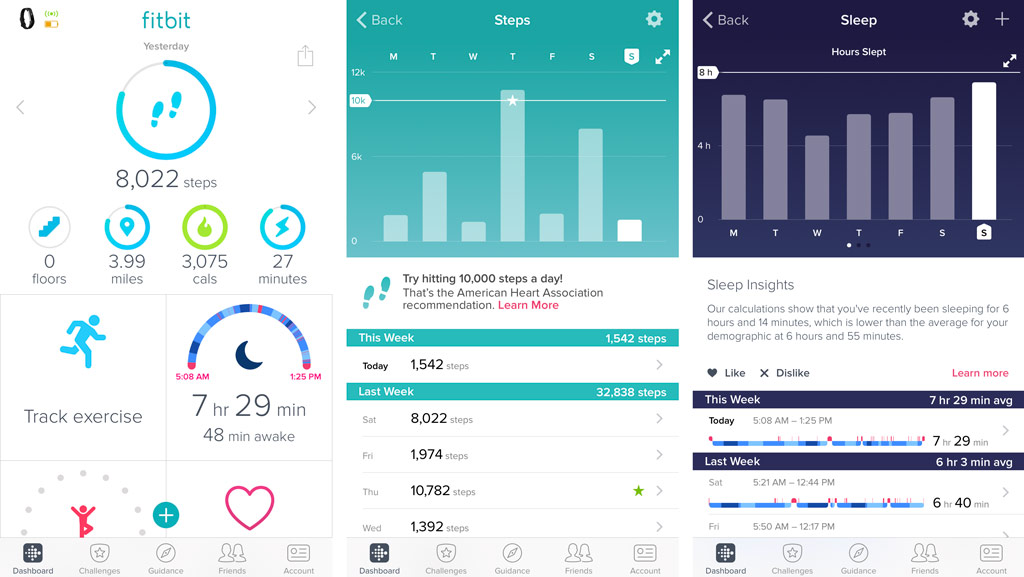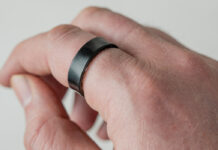
Using a fitness band is the only way to truly get the most out of it, so by slimming down in size, adding a heart rate monitor and improving tracking and battery life, Fitbit may have hit a solid mix with the Alta HR.
A fitness band is supposed to be innately personal, and yet, I’ve met people who have felt disconnected from their bands because they feel something is lacking. Fitbits have received mostly positive feedback in my anecdotal discussions, but the Alta HR seems best suited to those on the fence. It doesn’t promise as much as others from the company, though still offers a capable feature set for any novice or moderate user.
Design and setup
The most obvious element of the Alta line has always been the thinner design that makes it ideally suited to women looking for good reasons to keep it on for all occasions. Switching bands to others made of leather or metal help that cause, but more on that later.
Fitbit maintained much of what already existed with the previous Alta, including the display, only crammed in more under the hood to improve performance. The optical heart rate sensor underneath the main body is similar to that used in other Fitbits, except this is a first for the Alta line. Another improvement was a bigger and more efficient battery, keeping the band on for up to a week on one charge.
The rubberized band is vintage Fitbit, sticking with what has worked for the company over the last couple of years. The latch system to switch bands is as easy as it gets. I’ve always appreciated how quickly I can switch a band type before heading to the gym or for a night out. The watch-like clasp is also pretty painless.
Coming in either small or large sizes, the bands don’t have a middle ground, so Fitbit provides a sizing tool on its website to help you figure out which size fits best. The good thing is that the main unit is the same size, either way, so other bands will fit the same way.
Tapping the OLED display is the only way to interact with it, since there is no physical button anywhere on the device. Raising or twisting my wrist woke it up, so I could see basics, like the time, steps or heart rate. Double-tapping while asleep is another way to wake it up, with single taps cycling through the interface. It’s simplistic, and somewhat clunky, particularly because it requires a harder tap than I thought necessary to go through the menu.
There’s no swiping here. The unit will vibrate for notifications, sleep alarms and inactivity reminders, and whatever it shows rolls along like a ticker. If a text comes in, only the contact (or number) and first few words appear, for example.
The setup is app-driven, so pairing the Alta HR with the Fitbit app on iOS or Android was as easy as it’s ever been. Fitbit is also good at updating its devices through the account portion of the app, with phone notifications alerting you to new updates being an option too.

Performance and app
Without a physical button to control some of the features, the Fitbit app on iOS or Android sets much of the stage for the Alta HR. It’s here, upon setup, that I chose how I wanted the face to look (I chose to have heart rate with the time first, then switched to time and steps) and adjust other settings before getting started.
Like the Charge 2, SmartTrack is included here, enabling the band to automatically track certain exercises. By default, running, cycling, walking and few others are on the list. It may not kick in for everything, which is why some customization through the app may be necessary.
What I did notice was that SmartTrack worked well in recognizing when I was on the elliptical or bike at the gym. Longer walks in the city were also counted. This is in contrast to how the feature worked when I first tried it on the Charge 2 last year, and is a sign that Fitbit has improved performance with subsequent updates since.
The improved tracking seems to have had an effect on the other metrics too. Step counting may not be as accurate as a real pedometer, but it didn’t feel quite as inflated for me this time. The heart rate monitor appears to be more realistic too, but again, it won’t exactly match what a chest strap monitor can do.
Stair climbing was another one that used to be problematic, and continues to be a metric I can’t fully trust. Fitbit considers one flight of stairs to be 10 feet of steps. I did those multiple times entering or exiting a subway or at a restaurant, and not one flight was counted because the band doesn’t recognize stairs to begin with.
The phone’s GPS connection is required to measure distance and pace, a standard practice for any Fitbit device. There is Apple Music integration on the iPhone when manually starting exercise tracking, so that you can control music without having to switch apps. It works better for subscribers, but music stored on the phone is also accessible.

Exercise tools
Unlike the Flex 2, the Alta HR is only resistant to sweat and some rain, making it ineligible as a tracker for swimming.
The VO2 Max and cardio fitness readings I originally tried with the Charge 2 were available through the Alta HR as well. More precisely, these are available through the app, but because the Alta HR has the heart rate monitor, it can use those features. Tapping the heart rate portion of the dashboard opens up a chart that shows the cardio fitness level with a swipe.
Beyond that is the Fitstar personal training section. This is really more of a gateway to a separate app (there are in-app purchases, so it’s not all free) that offers workout videos tailored to whatever you’re looking to do. It does require signing up for a Fitstar account, which is then tied to your Fitbit account to help keep track of your workouts and recommend training routines based on your goals.
I found that these sorts of features are even more intricate if you manually input more information, like exercise goals, daily meals and water consumption. The wider the picture, and the more the Alta HR tracks, the more the app can try to personalize the experience.
Sleep tracking
Fitbit played up the Alta HR’s sleep tracking, suggesting it was fairly extensive for a fitness band. It is impressive to see how it measures the overall time slumbering, along with the stages throughout. Each night, it would note how long I was in a deep, light or REM (when dreaming apparently happens most) state. It even noted when I was awake.
The data is meant to be insightful over time, which explains why there’s a 30-day snapshot to articulate that. Fitbit says seven hours is the ideal benchmark each night, but the benchmarks extend to each stage of sleep as well. A graph indicated where I fit in for each stage based on what is supposed to be healthiest range.
Fitbit is trying a proactive approach here by providing suggestions on how to get more out of each sleep session. They are fairly generic to feel personalized, but the feature apparently takes time to learn and apply more specific insights. Either way, it’s a great start in focusing on something other fitness bands haven’t tackled in-depth.
Final thoughts
The Alta HR never skews too far in either direction, seemingly fulfilling Fitbit’s intention. It isn’t as deep a tracker as the Charge 2 or Blaze, but offers more than the Flex 2. It’s in that middle ground that would appeal to users who want reliable tracking without feeling like everything is missing.
The leather and metal bands are excellent, even if the latter one is limited to one size. Those bands help stylize the device to make it easier to wear in almost any setting. That’s important if all-day and all-night tracking is important to you.
The Fitbit Alta HR is available now in black, blue, plum and teal, and comes in either small or large. More fitness trackers are available too, and you can check them all out.




Great activity tracker to track your calories.
Comments are closed.